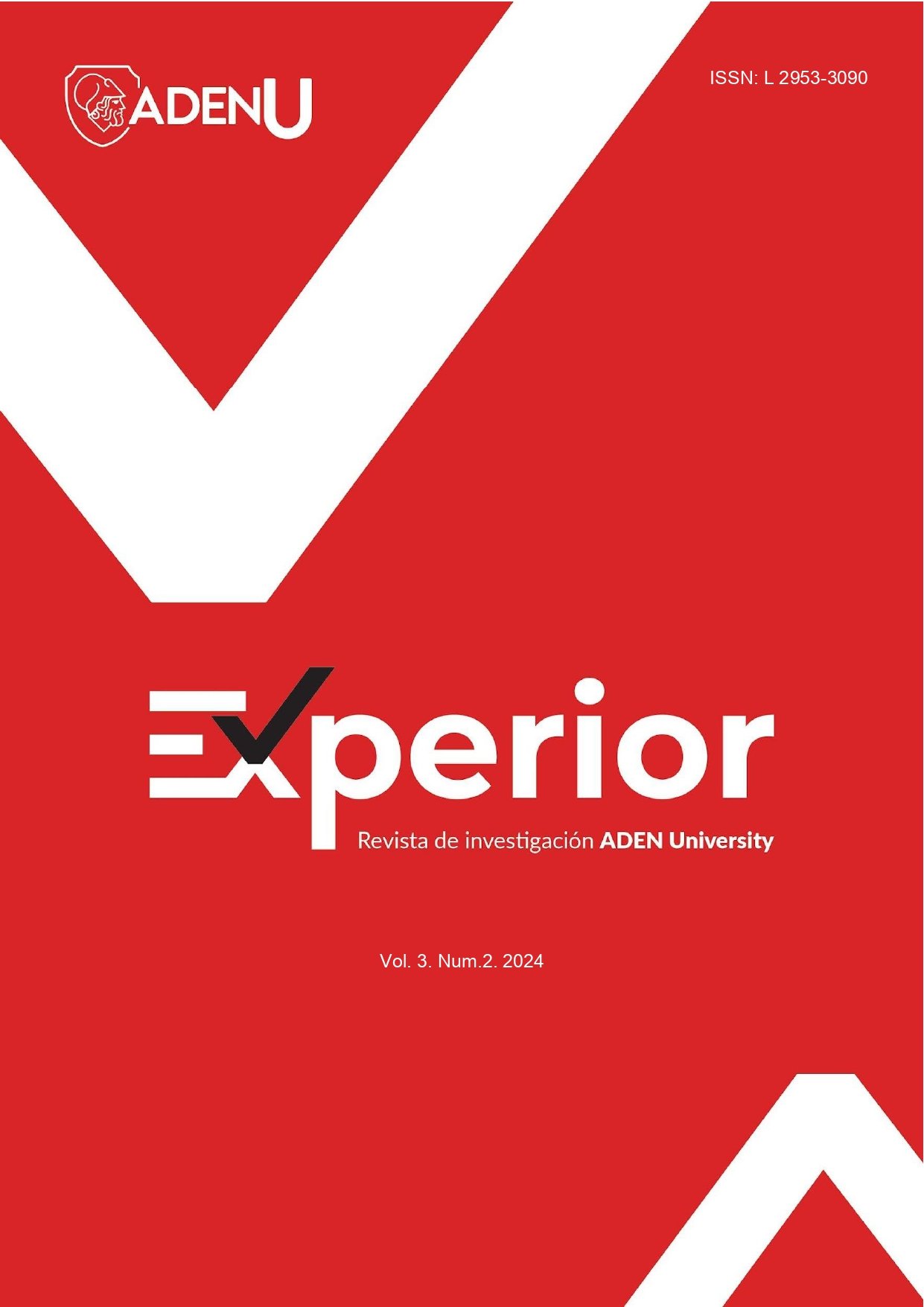Comunicación asertiva como factor relevante en el recurso humano
DOI:
https://doi.org/10.56880/experior32.6Palabras clave:
comunicación asertiva, clima laboral, satisfacción laboral, reducción del estrés, resolución de conflictos, recursos humanosResumen
La comunicación asertiva es necesaria para el entorno organizacional, ya que influye directamente en las relaciones laborales, la toma de decisiones y la resolución de conflictos. Este artículo explica cómo la asertividad puede mejorar el desempeño general de las organizaciones, inculcando la confianza, colaboración y efectividad entre los empleados. Este estudio documental utiliza fuentes cualitativas y teóricas para examinar la relevancia de la comunicación asertiva en el contexto organizacional se analizaron teorías como la de las demandas y recursos laborales de Bakker & Demerouti, el modelo de aprendizaje organizacional de Argyris & Schön, y el enfoque de cultura organizacional de Schein. Se examinaron estudios previos que investigan el impacto de la asertividad en las dinámicas laborales. Se identificó que la asertividad mejora el clima organizacional, disminuye el estrés y facilita la toma de decisiones. Además, crea un ambiente laboral más colaborativo, lo que repercute positivamente en el desempeño y satisfacción de los empleados. Los hallazgos confirman que una comunicación de este tipo puede aumentar la productividad y la cohesión en el entorno laboral.
Descargas
Referencias
Alberti, R. E., & Emmons, M. L. (2017). Your perfect right: Assertiveness and equality in your life and relationships (10th ed.). New Harbinger Publications.
Argyris, C., & Schön, D. A. (1996). Organizational Learning II: Theory, Method, and Practice. Addison-Wesley.
Bakker, A. B., & Demerouti, E. (2017). Job demands–resources theory: Taking stock and looking forward. Journal of Occupational Health Psychology, 22(3), 273–285. https://doi.org/10.1037/ocp0000056
Bakker, A. B., Demerouti, E., Sanz-Vergel, A., & Rodríguez-Muñoz, A. (2023). La teoría de las demandas y recursos laborales: Nuevos desarrollos en la última década. Revista de Psicología del Trabajo y de las Organizaciones, 39(3), 157-167. https://doi.org/10.5093/jwop2023a17
Barsky, B. (2017). Conflict Resolution for the Helping Professions. Springer.
Bass, B. M. (1986). Leadership and performance beyond expectations. The Free Press. https://doi.org/10.1002/hrm.3930250310
Bernal-Álava, Á. F., Cañate Vélez, C. R., Macías-Parrales, T. M. & Ponce-Castillo, M. Á. (2022). La comunicación asertiva y su aporte en el proceso de enseñanza y aprendizaje. Polo del Conocimiento: Revista científico-profesional, 7(4), 37. http://polodelconocimiento.com/ojs/index.php/es
Bono, J. E., & Judge, T. A. (2003). Self-concordance at work: Toward understanding the motivational effects of transformational leaders. Academy of Management Journal, 46(5), 554-571. http://m.timothy-judge.com/Bono%20%26%20Judge%20AMJ%202003.pdf
Bourdieu, P. (1991). Language and Symbolic Power. Harvard University Press.
Cameron, K. S., & Quinn, R. E. (2011). Diagnosing and Changing Organizational Culture: Based on the Competing Values Framework. Jossey-Bass.
Caridad, M., Cardeño, N., Cardeño, E., & Castellano, M. I. (2017). Contribuciones de la comunicación asertiva en la resolución de conflictos dentro de instituciones de educación superior. Revista Espacios, 38(50), 6-19. https://www.revistaespacios.com/a17v38n50/a17v38n50p06.pdf
Covey, S. M. R. (2006). The Speed of Trust: The One Thing that Changes Everything. Free Press.
Creswell, J. W. (2013). Research design: Qualitative, quantitative, and mixed methods approaches. SAGE Publications.
de Vries, R. E., Bakker-Pieper, A., & Oostenveld, W. (2010). Leadership = Communication? The relations of leaders’ communication styles with leadership styles, knowledge sharing and leadership outcomes. Journal of Business and Psychology, 25(3), 367-380. https://doi.org/10.1007/s10869-009-9140-2
Dirks, K. T., & Ferrin, D. L. (2002). Trust in leadership: meta-analytic findings and implications for research and practice. Journal of applied psychology, 87(4), 611. http://dx.doi.org/10.1037/0021-9010.87.4.611
Eagly, A. H., & Karau, S. J. (2002). Role congruity theory of prejudice toward female leaders. Psychological Review, 109(3), 573-598. https://doi.org/10.1037/0033-295X.109.3.573
Endo Durán, A. F., Hincapié Zabala, C. D., & Olarte Angulo, A. M. (2016). Orientando en estrategias de comunicación asertiva a un grupo de 6 trabajadoras del área de servicios generales de la Universidad Cooperativa de Colombia. (Informe de Grado). Universidad Cooperativa de Colombia.
Fisher, R., Ury, W., & Patton, B. (2011). Getting to Yes: Negotiating Agreement Without Giving In. Penguin Books.
Foucault, M. (1980). Power/Knowledge: Selected Interviews and Other Writings, 1972-1977. (C. Gordon, Ed.). Pantheon Books.
Goleman, D. (2000). Leadership that gets results. Harvard Business Review, 78(2), 78-90. https://www.cdfifund.gov/sites/cdfi/files/documents/(51)-leadership-that-gets-results.pdf
Goleman, D. (2006). Social intelligence: The new science of human relationships. Bantam Books.
Kouzes, J. M., & Posner, B. Z. (2012). LPI: Leadership practices inventory: Development planner (Vol. 270). John Wiley & Sons.
Lazarus, R. S., & Folkman, S. (1984). Stress, Appraisal, and Coping. Springer.
McPheat, S. (2022). What is the Thomas Kilmann Conflict Management Model? (With examples). In Management Training Specialists. https://www.mtdtraining.com/blog/thomas-kilmann-conflict-management-model.htm
Northouse, P. G. (2021). Leadership: Theory and Practice. Sage Publications.
Rahim, M. A. (2002). Toward a theory of managing organizational conflict. The International Journal of Conflict Management, 13(3), 206-235. https://doi.org/10.1108/eb022874
Rosenberg, M. B. (2003). Nonviolent communication: A language of life (2nd ed.). PuddleDancer Press.
Salas, E., Tannenbaum, S. I., Kraiger, K., & Smith-Jentsch, K. A. (2015). The science of training and development in organizations: What matters in practice. Psychological Science in the Public Interest, 13(2), 74-101. https://doi.org/10.1177/1529100612436661
Salter, A. (2001). Conditioned reflex therapy. Wellness Institute, Inc.
Schein, E. H. (2010). Organizational Culture and Leadership. Jossey-Bass.
Serrano, S. (2004). El regalo de la comunicación. Editorial Anagrama.
Spitzberg, B. H., & Cupach, W. R. (2012). Interpersonal communication competence (5th ed.). Sage Publications.
Stone, D., Patton, B., & Heen, S. (2023). Difficult conversations: How to discuss what matters most. Penguin.
Tjosvold, D. (2008). The conflict-positive organization: It depends upon us. Journal of Organizational Behavior, 29(1), 19-28. https://doi.org/10.1002/job.473
Treviño, L. K., Weaver, G. R., & Reynolds, S. J. (2006). Behavioral ethics in organizations: A review. Journal of Management, 32(6), 951-990. https://doi.org/10.1177/0149206306294258
Descargas
Publicado
Número
Sección
Licencia

Esta obra está bajo una licencia internacional Creative Commons Atribución-NoComercial 4.0.










